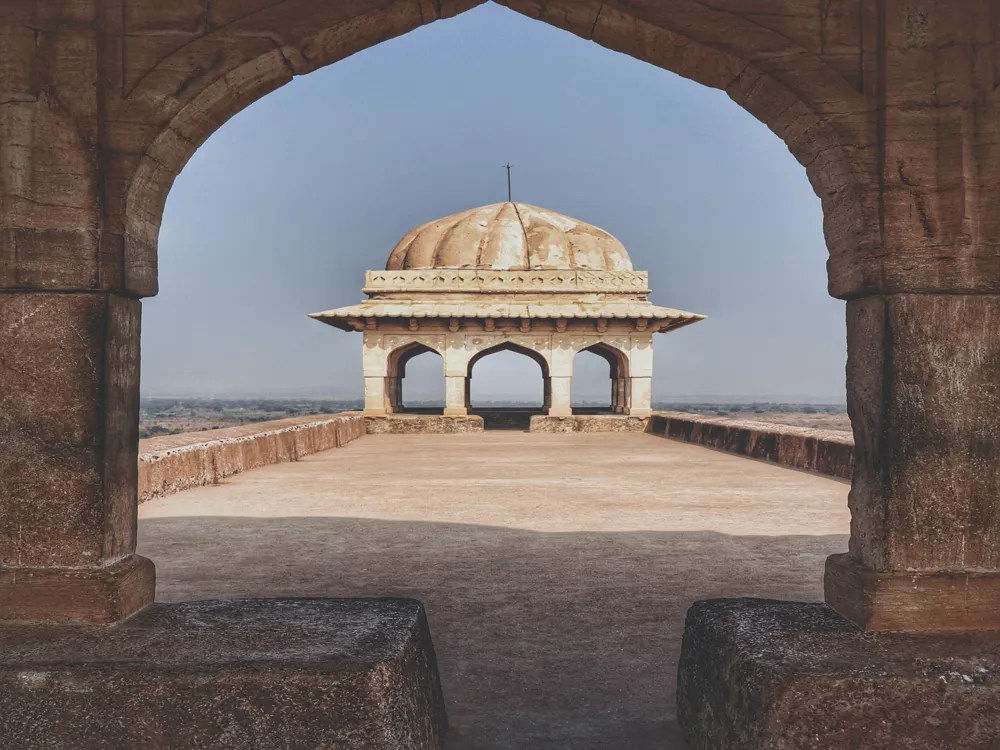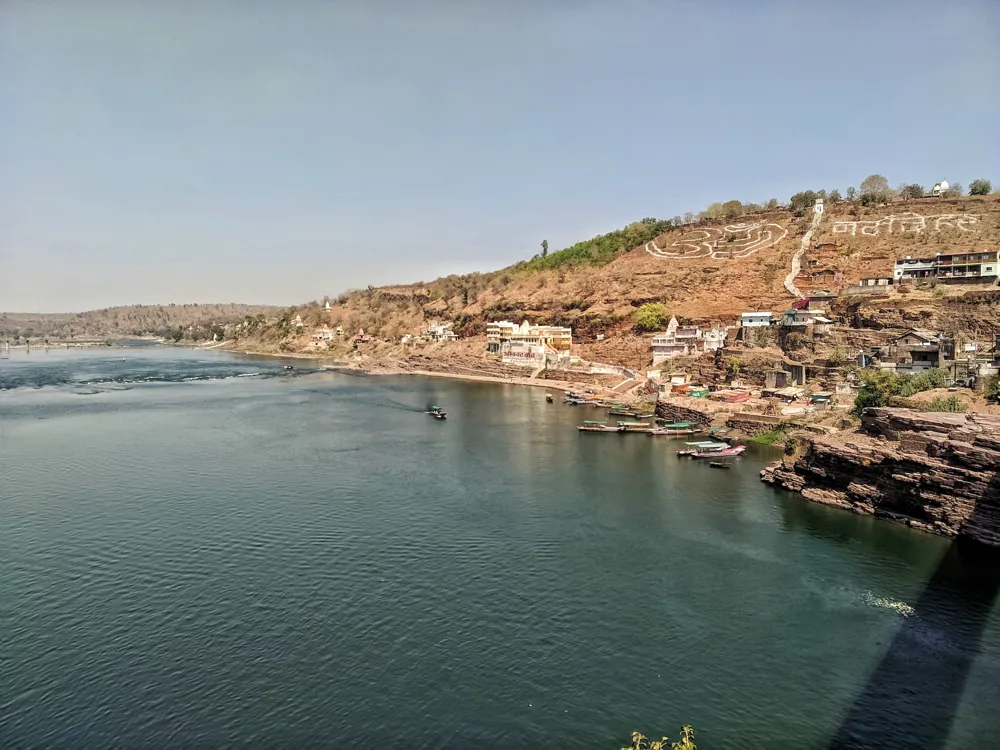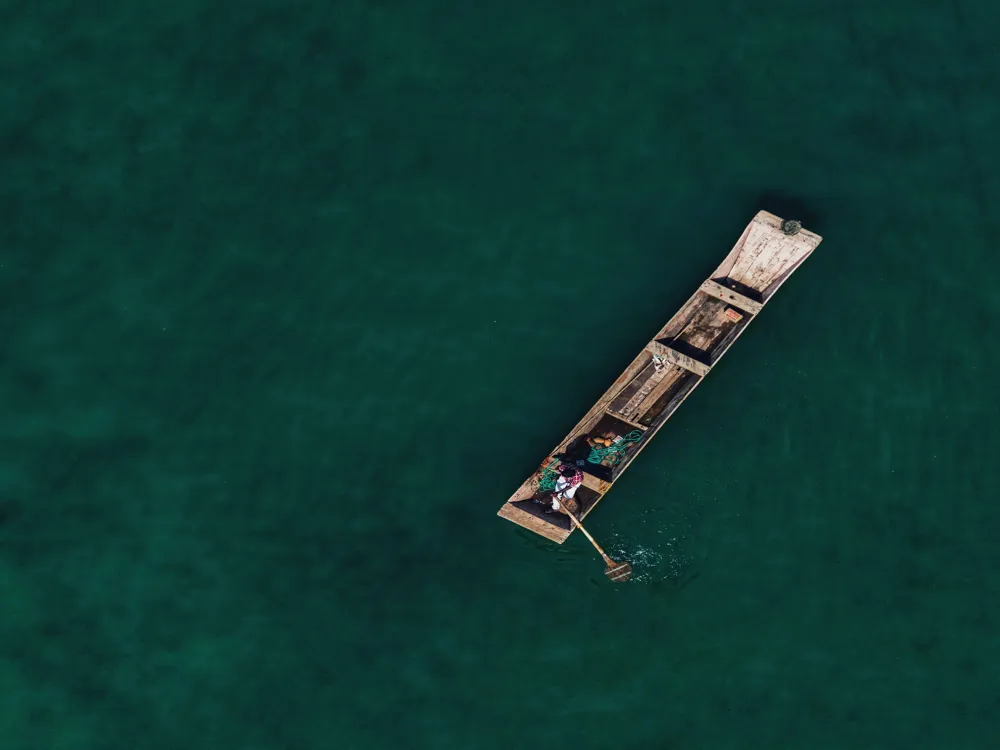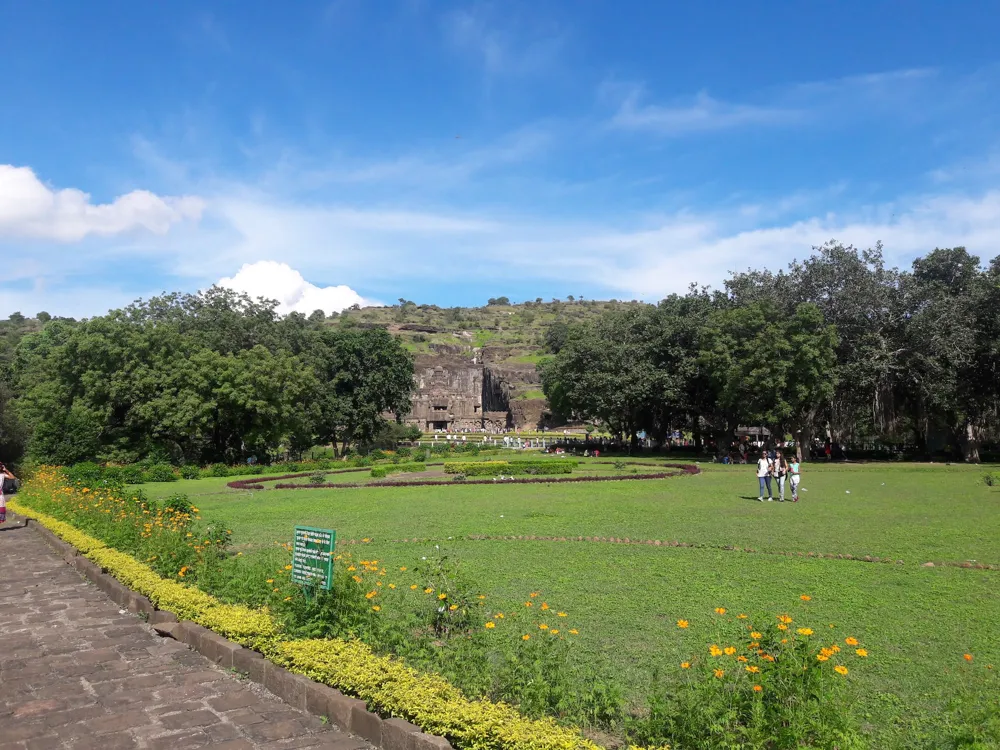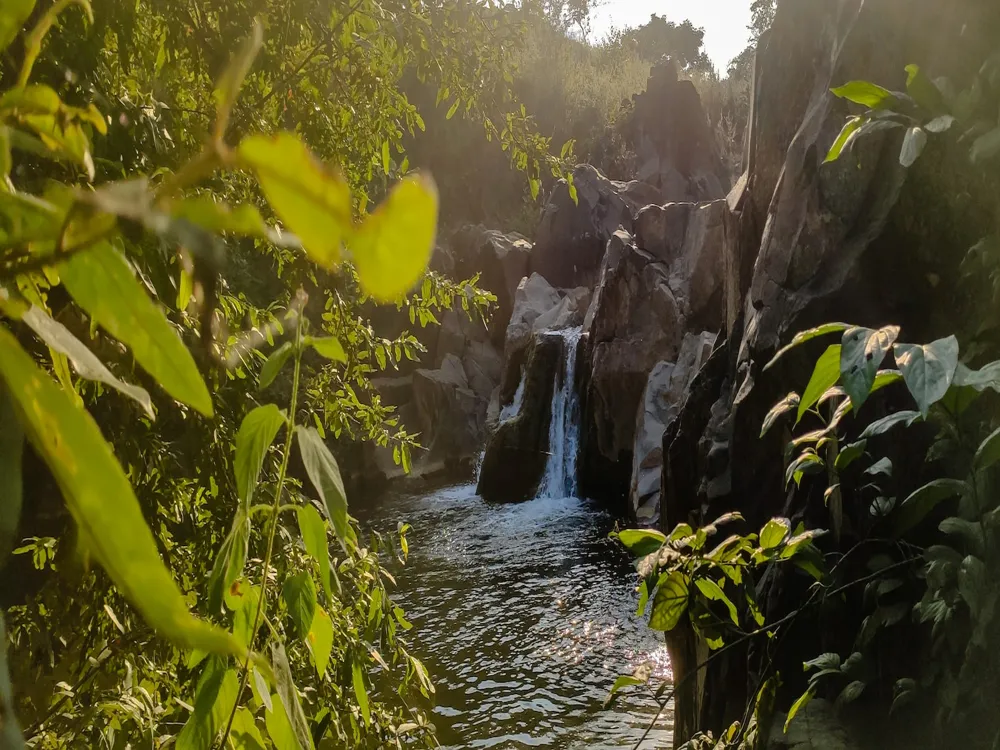Overview of Rani Rupmati's Pavilion in Mandu, Madhya Pradesh
Rani Rupmati's Pavilion, nestled in the quaint town of Mandu in Madhya Pradesh, India, is a historical edifice that stands as a testament to love and architectural brilliance. This pavilion, an integral part of India's rich cultural heritage, was built in the 15th century under the patronage of Sultan Baz Bahadur of Malwa. The pavilion is famously associated with the romantic tale of Sultan Baz Bahadur and Rani Rupmati, an epitome of true love and devotion, making it a site of historical and emotional significance.
The pavilion is strategically located at the edge of a hill providing a panoramic view of the Nimar plains below. This positioning was not only for aesthetic pleasure but also served as a vantage point to keep an eye on enemy movements, blending beauty with utility. The architecture of Rani Rupmati's Pavilion is a unique amalgamation of Afghan and Indian styles, reflecting the cultural fusion of that era. The pavilion is made predominantly of red sandstone, adorned with intricately carved arches and domes, showcasing the exquisite craftsmanship of the artisans of the time.
The story of Rani Rupmati and Sultan Baz Bahadur adds a layer of romantic allure to the pavilion. Rani Rupmati, renowned for her beauty and melodious voice, would gaze at the river Narmada and sing for her beloved from this pavilion. This historic site not only draws history enthusiasts but also inspires poets, artists, and romantics from across the world.
Over the centuries, Rani Rupmati's Pavilion has withstood the tests of time, weathering both natural elements and human conflicts. Today, it stands as a proud reminder of India's past, attracting thousands of visitors each year who come to marvel at its beauty and delve into its rich history.
The architecture of Rani Rupmati's Pavilion
The architectural design of Rani Rupmati's Pavilion is a splendid example of the fusion of Indian and Afghan styles, reflecting the diverse cultural influences of the Malwa Sultanate period. The structure is predominantly made of red sandstone, a material widely used in Indian architecture for its durability and aesthetic appeal. The pavilion is characterized by large open arches that provide an unobstructed view of the surrounding landscape, particularly the river Narmada, which was revered by Rani Rupmati.
The pavilion's design includes two large pavilions that are interconnected. The larger one is believed to have been used by Rani Rupmati to view the river and engage in her daily worship. This pavilion is adorned with a large dome, typical of Afghan architecture, and is supported by intricately carved pillars. These pillars are not just structural elements but are also adorned with exquisite carvings depicting floral motifs and geometric patterns, showcasing the artistic prowess of the craftsmen.
The smaller pavilion, adjacent to the larger one, served as a music chamber where Rani Rupmati is said to have indulged in her passion for music. This part of the pavilion is more intimate, with a flat roof and a series of smaller domes surrounding it. The harmonious blend of domes and flat roofs in the pavilion is a distinctive feature, showcasing a blend of Sultanate and Rajput styles of architecture.
A significant aspect of the pavilion’s architecture is its emphasis on harmony with nature. The open design, with its large arches and panoramic views, ensures that the structure complements its natural surroundings. The pavilion is often bathed in the golden hues of sunrise and sunset, creating a mesmerizing effect that enchants visitors.
The layout of Rani Rupmati's Pavilion also reveals a thoughtful approach to water conservation, an essential aspect in the arid region of Mandu. The pavilion has a well-designed system for rainwater harvesting, which was a critical resource for the residents during that period.
Tips for Visiting Rani Rupmati's Pavilion
Best Time to Visit
The ideal time to visit Rani Rupmati's Pavilion is between October and March. During these months, the weather is pleasant, making it comfortable to explore the pavilion and its surroundings. The monsoon season, from July to September, also offers a lush, green landscape, but visitors should be prepared for intermittent rain.
Guided Tours
Opting for a guided tour can enhance your visit, as guides provide in-depth historical context and interesting anecdotes about the pavilion. Local guides are available at the site and are usually knowledgeable about the history and architecture of the pavilion.
Photography Tips
Photographers will find the pavilion a delight, especially during sunrise or sunset, when the light casts a magical glow on the structure. Using a wide-angle lens can help capture the expansive views of the pavilion and its surroundings.
Local Etiquette and Customs
Visitors are advised to dress modestly and respect the local customs and traditions. As the pavilion is a site of historical and cultural significance, it is important to maintain decorum and avoid causing any damage to the structure.
Facilities and Accessibility
Basic facilities, like restrooms and a small cafeteria, are available near the pavilion. However, visitors are advised to carry their own water and snacks. The pavilion is accessible by foot, but the terrain may be challenging for those with mobility issues.
How To Reach Rani Rupmati's Pavilion
Rani Rupmati's Pavilion is located in Mandu, Madhya Pradesh, which is well-connected by road to major cities like Indore and Bhopal. The nearest airport is in Indore, about 100 kilometers away. From Indore, visitors can hire taxis or take buses to reach Mandu. The pavilion itself is situated atop a hill and can be reached by a short hike from the base, where vehicles are parked.
Read more
Mandu Tourism
Best Time to Visit Mandu
How to Reach Mandu
Things To Do Mandu












